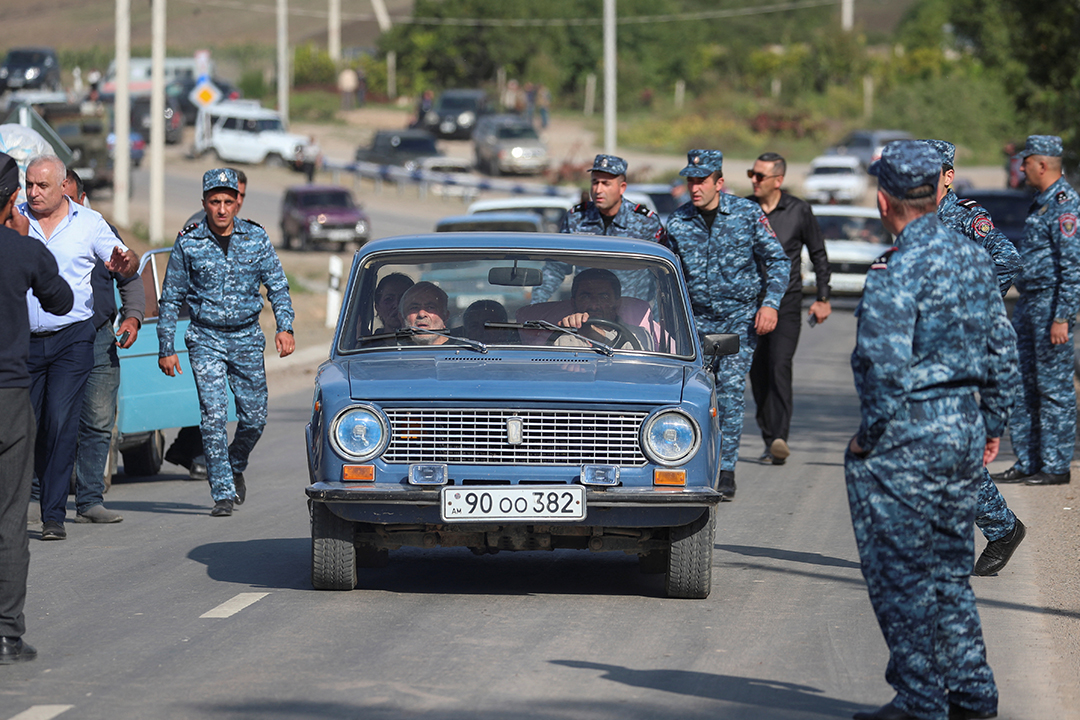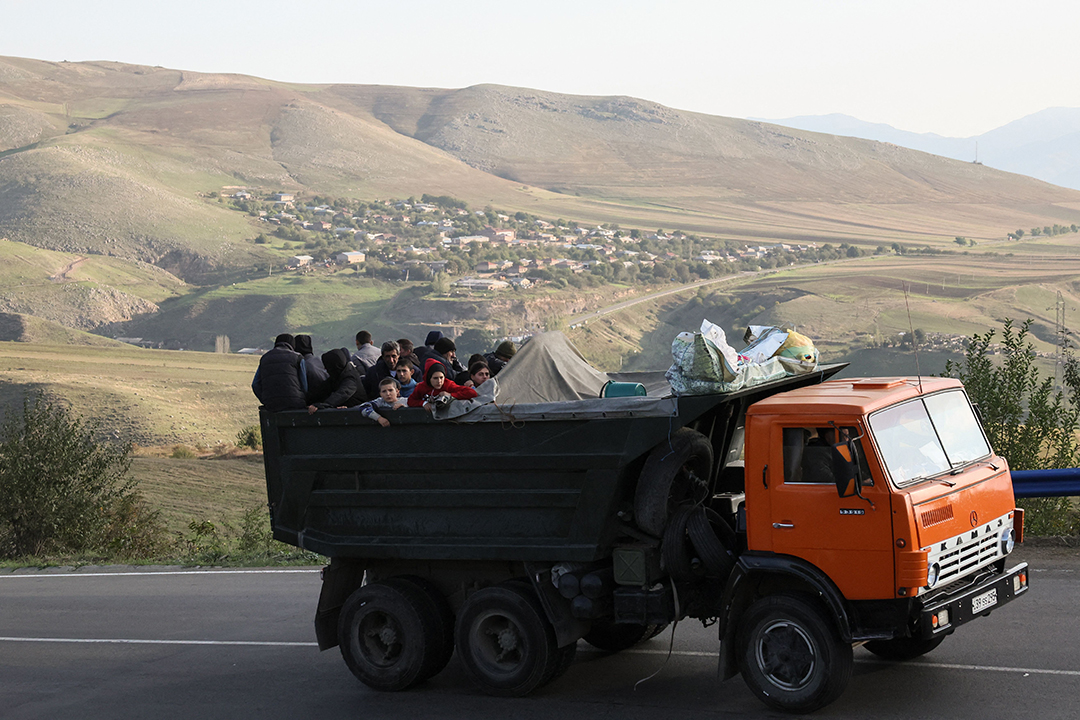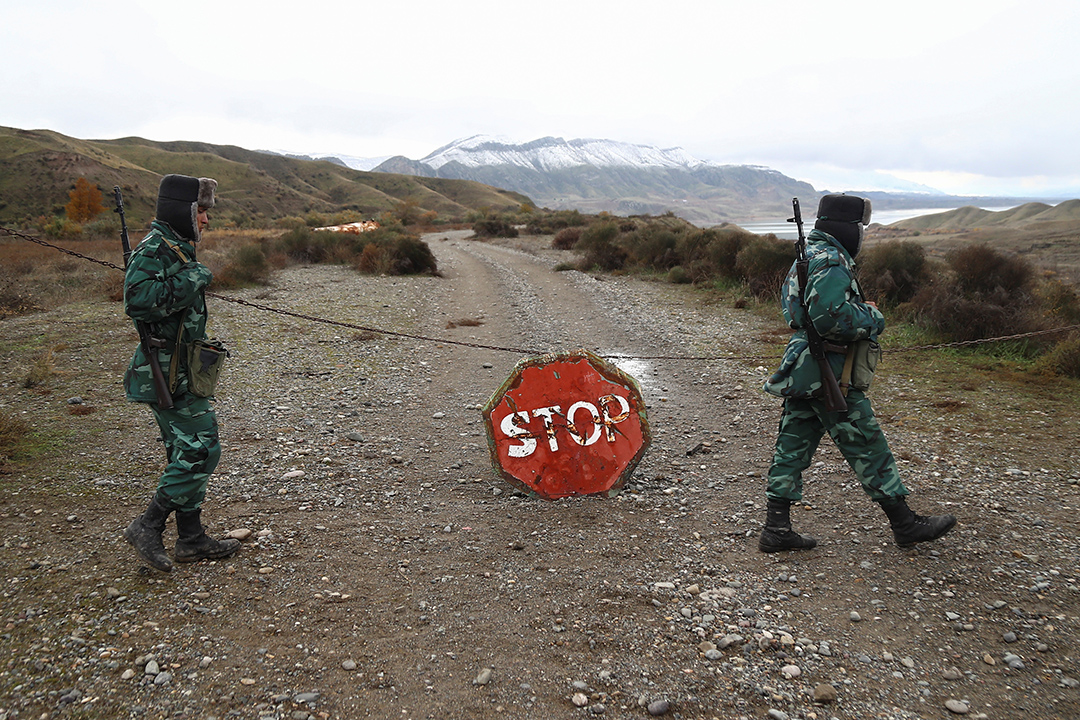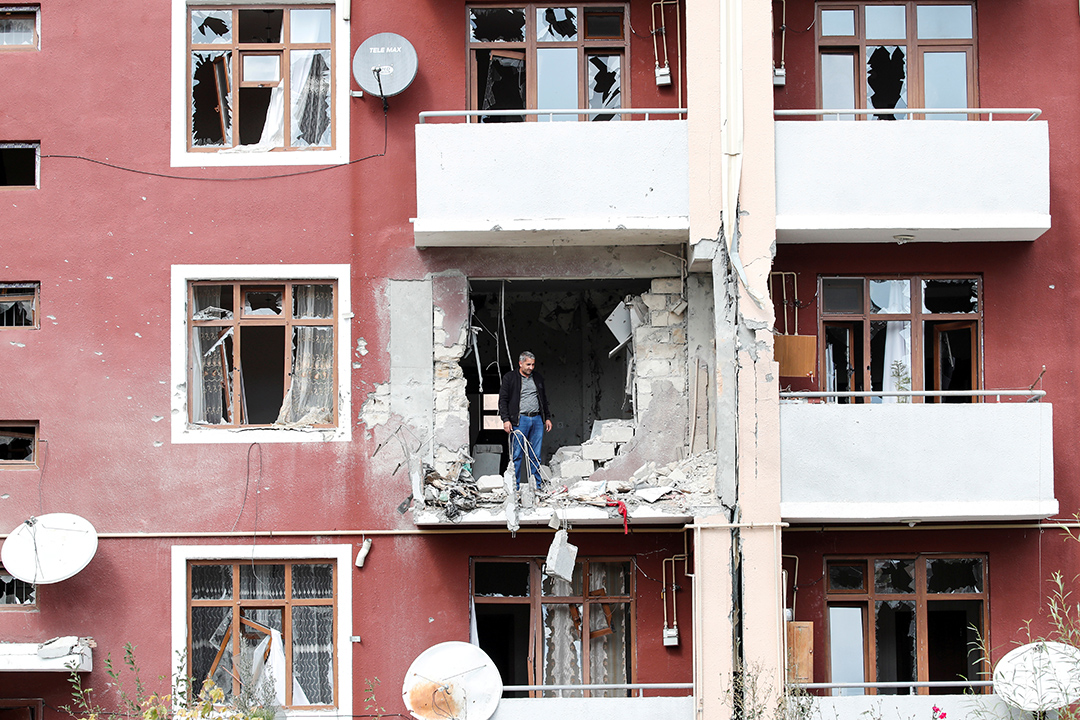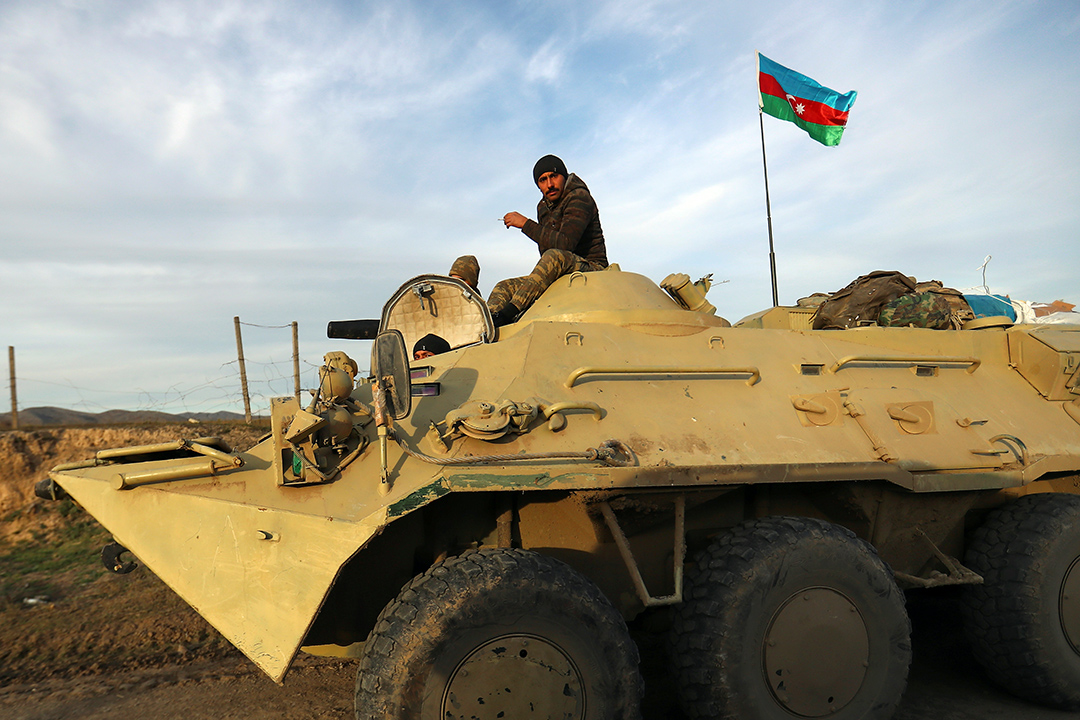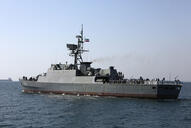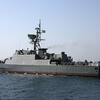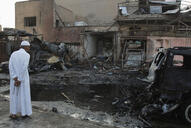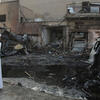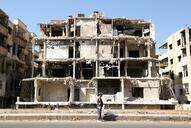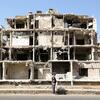Following Azerbaijan’s lightning offensive and occupation of Nagorno-Karabakh on September 19, 2023, the ethnic Armenian enclave was officially dissolved on January 1, 2024. Faced with the prospect of rule by Azerbaijan, more than one hundred thousand people, almost all of Nagorno-Karabakh’s population, fled to Armenia in one week. Since then, Baku has remained focused on the integration and economic reconstruction of the region, resettling ethnic Azeris who were displaced during the Nagorno-Karabakh Wars. In March 2025, the two governments announced they were ready to sign a peace deal to end the nearly forty-year conflict.
In 1923, the Soviet Union established the Nagorno-Karabakh Autonomous Oblast—home to a 95 percent ethnically Armenian population—within the Azerbaijan Soviet Socialist Republic. Nagorno-Karabakh’s regional legislature passed a resolution in 1988 declaring its intention to join the Republic of Armenia despite its official location within Azerbaijan. Armed fighting between the two republics, which have a long history of ethnic tension, quickly followed. Amid Soviet dissolution in 1991, just as Armenia and Azerbaijan achieved statehood, Nagorno-Karabakh officially declared independence and full-scale war erupted. The first Karabakh war, from 1988 to 1994, resulted in roughly thirty thousand casualties and created hundreds of thousands of refugees. By 1993, Armenia had gained control of Nagorno-Karabakh and occupied 20 percent of Azerbaijan’s geographic area. In 1994, Russia brokered a ceasefire known as the Bishkek Protocol, leaving Nagorno-Karabakh de facto independent, with a self-proclaimed government in Stepanakert, but still heavily reliant on close economic, political, and military ties with Armenia.
Since the bilateral acceptance of a ceasefire in 1994, which formally remained in force until September 2020, the use of attack drones, shelling, and special operations activities by Armenian and Azerbaijani troops have led to intermittent clashes. Early April 2016 witnessed the most intense fighting since 1994, leading to hundreds of casualties along the line of separation. After four days of fighting, the two sides announced they had agreed to cease hostilities. However, a breakdown in talks resulted in both sides accusing each other of ceasefire violations, and tensions remained high.
Following a summer of cross-border attacks, heavy fighting broke out along the Azerbaijan-Nagorno-Karabakh border in late September 2020. More than seven thousand soldiers and civilians were killed, with hundreds more Armenian and Azerbaijani soldiers wounded. Both countries initially rejected pressure from the United Nations, the United States, and Russia to hold talks and end hostilities, and instead pledged to continue fighting. Tensions escalated further when both sides switched from cross-border shelling to longer-range artillery and other heavy weaponry. After several failed attempts by Russia, France, and the United States, to negotiate a ceasefire, Russia successfully brokered a deal on November 9, 2020, reinforced by Russian peacekeepers, ending the six-week Second Nagorno-Karabakh War. Azerbaijan reclaimed most of the territory it lost two decades prior, leaving Armenia with only a portion of Karabakh. The agreement also established the Lachin corridor, a small strip of land to be monitored by Russian peacekeepers that would serve as a transit route connecting Armenia to Nagorno-Karabakh.
Negotiation and mediation efforts, primarily led by the Minsk Group of the Organization for Security and Cooperation in Europe (OSCE), have failed to produce a permanent solution to the conflict. The Minsk Group was created in 1994 to address the dispute and is co-chaired by the United States, France, and Russia. The three co-chairs are empowered to organize negotiations with the leaders of Armenia and Azerbaijan, separately and at summits. Although the group has successfully negotiated ceasefires, territorial disputes remain as intractable as ever.
Periodic violations of the 2020 ceasefire eventually escalated into a two-day conflict beginning September 13, 2022—the most significant provocation since 2020. The death toll has been disputed, with estimates ranging from one to three hundred killed in the cross-border attacks. Azerbaijan launched attacks on several locations inside Armenian territory, which forced the evacuation of more than 2,700 civilians. Armenia and Azerbaijan have exchanged accusations of blame for initiating the violence. Despite its focus on the conflict in Ukraine, Russia claimed credit for mediating a truce between the warring parties. Additional border clashes were reported on September 21, September 23, and September 28, less than one week after the Russian-brokered truce.
In December 2022, Azerbaijani activists occupied the Lachin corridor, ostensibly protesting environmental degradation caused by illegal mining in Nagorno-Karabakh. However, the protesters reportedly had state backing from Baku, and they blocked all traffic except for Red Cross and Russian convoys. The Russian peacekeepers, in place to ensure the artery remained open for Armenian supplies, were unwilling or unable to secure and reopen the highway. As a result, residents in Nagorno-Karabakh faced severe shortages and rationing.
On April 23, 2023, Azerbaijan opened a checkpoint on the highway, which it claimed was necessary to intercept and deter military shipments from Armenia to Nagorno-Karabakh. The protests ended days later, suggesting that the government’s true objective was to block Armenian passage. Armenia and ethnic Armenian leaders in Nagorno-Karabakh condemned the checkpoint, saying Azerbaijan sought to isolate Karabakh Armenians and solidify its control over the region. Russia, meanwhile, issued only a mild statement criticizing the move. In the face of repeated efforts to restrict Armenia’s access to the region, the peacekeeping force’s passivity eroded trust in Russia as a viable security guarantor.
On September 19, 2023, days after an agreement to reopen the Lachin Corridor for aid deliveries sparked hopes of easing the crisis, Azerbaijan launched an “anti-terrorist” offensive in Nagorno-Karabakh. Karabakh officials said at least two hundred people died in the operation, which Azerbaijan said was aimed at neutralizing Armenian military installments. Within two days, Azerbaijan claimed to have regained complete control over the region, and Russia-mediated negotiations began in Yevlakh, Azerbaijan, over the disarmament of Armenian separatists and the reintegration of Nagorno-Karabakh into Azerbaijan. Meanwhile, protestors took to the streets in Yerevan, Armenia, accusing the government of failing to protect ethnic Armenians and demanding the resignation of Prime Minister Nikol Pashinyan. At stake was the status of around 100,000 ethnic Armenians living in the disputed territory; thousands immediately fled to Armenia, fearing persecution if they stayed, and officials demanded security guarantees for those who remained before they agreed to give up their weapons.
Following the dissolution of Nagorno-Karabakh, Azerbaijan and Armenia entered peace talks. In April 2024, Armenia agreed to hand over four border villages to Azerbaijan. One of Azerbaijan’s main grievances concerns the preamble of the Armenian Constitution, which references the eventual reunification of Armenia and Nagorno-Karabakh. In response, Pashinyan agreed to initiate a constitutional referendum, scheduled for 2027. Despite public backlash, he reiterated his commitment to amend the constitution, aiming to draft a new version before the 2026 parliamentary elections.
Azerbaijan’s plans to construct the Zangezur Corridor also present a significant obstacle to solidifying a peace agreement. The corridor is intended to link Azerbaijan’s mainland with the Nakhchivan exclave, which is separated by approximately forty-three kilometers of southern Armenia. With its potential to boost trade and transit, Turkey, Russia, and Central Asian states seek the project’s completion through a peace deal. However, Yerevan has raised security concerns over the project’s “unimpeded” passage through its territory and remains wary of Russian troops deployed to secure the corridor.
Other negotiation points include the future of the OSCE Minsk Group, which Armenia and Azerbaijan formally abandoned in January 2025, and the presence of third-party monitors. Although both parties seek to exclude outside actors from peace talks, Azerbaijan has demanded the removal of European Union border monitors currently stationed in Armenia.
In April 2024, Armenia filed a case with the International Court of Justice (ICJ), accusing Azerbaijan of committing ethnic cleansing. Azerbaijan responded with a countersuit. In November 2024, the ICJ ruled that both parties could proceed with their respective cases. Despite the ongoing legal dispute, Baku has remained focused on reconstructing Nagorno-Karabakh, allocating over $11 billion to revitalize the region. Thousands of displaced Azerbaijani citizens have begun returning to the area.
In 2025, Azerbaijan initiated trials against sixteen former ethnic Armenian officials from Nagorno-Karabakh, notably the region’s former state minister, Ruben Vardanyan. Armenian officials have criticized the proceedings as “mock trials,” citing restricted media access and arbitrary terrorism charges against the defendants.
